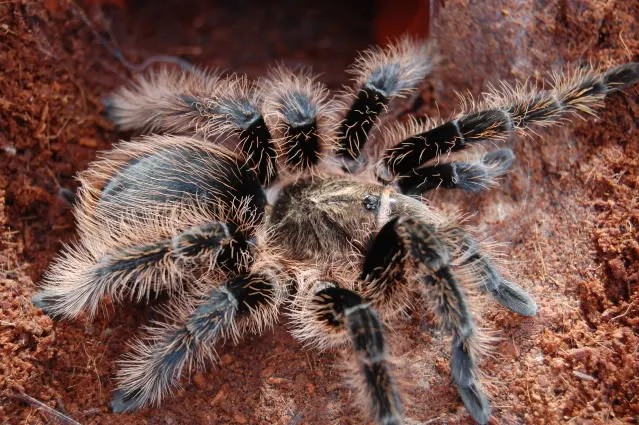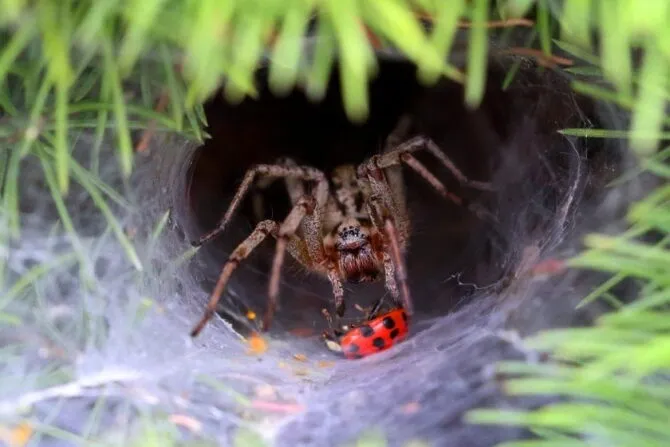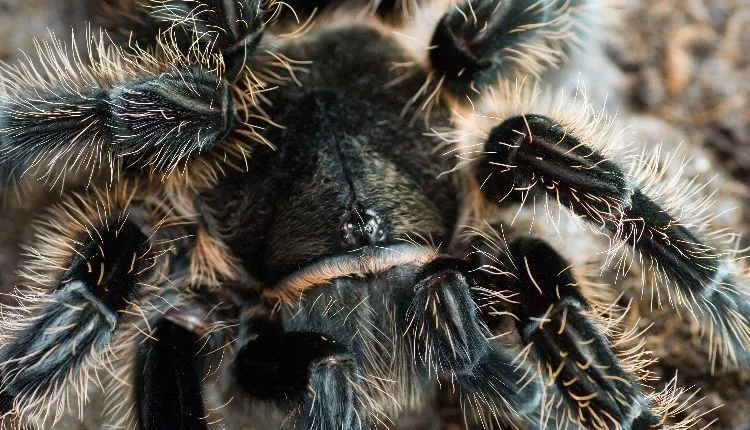Introduction
The Curly Hair Tarantula ( Tliltocatl albopilosus ) is a popular pet due to its docile nature, striking appearance, and relatively easy care requirements. One of the most common questions asked by new and experienced owners alike concerns the duration these fascinating creatures can go without food. Understanding the fasting capabilities of your Curly Hair Tarantula is crucial for responsible pet ownership, allowing you to provide the best possible care and ensure its long-term health and well-being. This article will delve into the biology, influencing factors, and practical aspects of fasting in Curly Hair Tarantulas, offering valuable insights for every tarantula enthusiast. Keeping your tarantula healthy and informed is the most important thing. Proper husbandry includes feeding. This guide will show you how.
Understanding Curly Hair Tarantula Biology
To comprehend how long a Curly Hair Tarantula can fast, it’s essential to understand its basic biology. These tarantulas, native to the rainforests of Central America, are opportunistic predators. In the wild, they may experience periods of food scarcity, and their bodies have adapted to survive without regular meals. They are ectothermic, meaning their body temperature is regulated by their environment, which significantly affects their metabolism and energy needs. Their overall health is also influenced by their stage of life, with younger tarantulas typically needing more frequent feeding compared to adults. Their metabolism is the key to understanding how long they can go without food. All life is supported by it.
Metabolic Rates and Fasting

A tarantula’s metabolic rate is directly linked to its energy consumption and how quickly it uses its reserves. During periods of fasting, the tarantula’s metabolism slows down to conserve energy. This is a survival mechanism that allows them to endure periods without food. The slower the metabolism, the longer the tarantula can survive. Smaller, younger tarantulas have faster metabolisms, requiring more frequent feeding, while older, larger tarantulas can endure longer periods of fasting. The tarantula’s ability to conserve energy is the primary determinant of fasting duration. It’s like a car’s fuel efficiency; the more efficient, the further it can go.
Factors Influencing Fasting Duration
Several factors influence how long a Curly Hair Tarantula can go without eating. These include environmental conditions, the tarantula’s overall health, and its life stage. Understanding these factors will help you better manage your tarantula’s feeding schedule and identify potential health issues. It is the totality of these factors that determines the overall health of the tarantula. It’s a complex interplay of elements, each playing a crucial role in the tarantula’s ability to thrive during periods of food scarcity. Consider these factors as you prepare to care for your tarantula.
Temperature’s Impact
Temperature plays a vital role in a tarantula’s metabolism. Higher temperatures can speed up the metabolic rate, increasing the need for food, while lower temperatures can slow it down, enabling the tarantula to survive longer without eating. It’s crucial to maintain an appropriate temperature range within the tarantula’s enclosure to optimize its metabolism and overall health. Providing the correct environmental temperature can greatly increase their lifespan. This is one of the easiest factors to control and greatly impacts the health of the tarantula.
Humidity and Hydration

Humidity and hydration are also critical. While tarantulas can survive without food for extended periods, they must always have access to fresh water. Dehydration can be fatal, and a constant supply of water ensures the tarantula can maintain its bodily functions during fasting. Regular misting (if appropriate for the species) and a clean water dish are essential for their well-being. Ensure that the water dish is shallow enough to prevent drowning but deep enough to provide sufficient hydration. Remember to change the water regularly to avoid contamination.
Size and Age of the Tarantula
The size and age of the tarantula significantly impact its fasting capabilities. Spiderlings and juvenile tarantulas, due to their faster metabolisms and smaller size, require more frequent feeding than adults. Adult Curly Hair Tarantulas can generally go longer without food, sometimes several months, as their metabolic rates are slower, and they have more stored energy reserves. The life stage of the tarantula is crucial when determining how often to feed. Feeding habits will change as the tarantula ages and grows, so pay close attention to size and age to determine the feeding schedule.
Health and Molting
A healthy tarantula is better equipped to handle periods of fasting. Proper nutrition, a clean environment, and the absence of diseases or parasites are vital for their overall health. Molting also affects feeding habits. Tarantulas typically stop eating before molting and may not eat for several days or even weeks afterward, as they are vulnerable during this process. The molting process is a taxing time for the tarantula, and adequate pre-molt preparation helps ensure their survival. Be patient and allow the tarantula to resume feeding on its own schedule after molting.
Signs of a Hungry Tarantula

While Curly Hair Tarantulas can fast for extended periods, it’s essential to recognize signs that they are hungry or experiencing health issues. Observing your tarantula’s behavior and physical condition can help you determine when to offer food and when to be concerned. Paying attention to these signs can help you identify issues before they escalate into something serious. These signs can vary, so understanding your specific tarantula’s behavior is key. It is important to remember that tarantulas do not necessarily eat every day. Providing adequate food and monitoring their behavior is the best way to provide good care for your pet.
Recognizing Lethargy
Lethargy, or a lack of energy, can indicate a need for food or an underlying health problem. If your tarantula is unusually inactive, moves slowly, or doesn’t respond to stimuli as it normally would, it may be a sign of hunger or illness. Lethargy can also be a normal part of the molting process, so consider other factors. Always observe the tarantula’s overall behavior to assess whether the lethargy is a cause for concern. Consult a veterinarian if lethargy persists and is accompanied by other symptoms.
Abdomen Size and Appearance
The size and appearance of the tarantula’s abdomen can offer clues about its feeding status. A well-fed tarantula will have a plump abdomen, while a tarantula that has been fasting for a while may have a smaller, less rounded abdomen. However, keep in mind that a smaller abdomen is not always a sign of starvation, especially in adults, which can survive for extended periods without eating. Monitor the abdomen size over time and correlate it with other behaviors to assess its feeding needs. This can be a crucial factor in determining how often you should feed your tarantula.
Safe Fasting Practices

There are several safe practices to follow when managing your Curly Hair Tarantula’s feeding schedule. Always provide fresh water, maintain an appropriate environment, and avoid overfeeding. It is important to be a responsible owner and provide proper care for your tarantula. These practices will help ensure that the tarantula remains healthy and thrives. Proper husbandry and care include the practices listed below. This will help you provide the best care for your pet.
Providing Fresh Water
A constant supply of fresh, clean water is non-negotiable. Use a shallow water dish to prevent drowning, and replace the water regularly to avoid contamination. Tarantulas can become dehydrated, which is a serious threat to their health. Hydration is crucial for all bodily functions, and dehydration can be deadly, even if the tarantula is not fasting. Keeping the water dish clean will ensure the tarantula’s hydration and overall health. Monitoring water intake is also very important.
Maintaining Optimal Environment
Maintain the appropriate temperature and humidity levels for the species. A stable environment helps regulate the tarantula’s metabolism and ensures they can thrive during fasting periods. Provide adequate ventilation to prevent mold growth and ensure the tarantula’s enclosure is clean. The environment must be suitable for the tarantula’s needs. Remember that a stable environment is crucial for overall health, not only during fasting. The proper environment will lead to a long and healthy life for the tarantula.
When to Worry and Seek Advice

While Curly Hair Tarantulas can fast for extended periods, there are times when you should be concerned and seek advice from a veterinarian or experienced tarantula keeper. Persistent lethargy, refusal to eat for an unusually long time, or any other unusual behaviors should be evaluated. It is important to seek help when you need it. Early intervention can often prevent a minor issue from becoming a major health problem. Recognizing when your tarantula needs assistance is a sign of responsible pet ownership.
Conclusion
Curly Hair Tarantulas are remarkably resilient creatures, capable of enduring periods of fasting. Understanding their biology, the factors influencing fasting duration, and recognizing the signs of hunger or illness are essential for responsible pet ownership. By providing the appropriate environment, fresh water, and observing your tarantula’s behavior, you can ensure it thrives and lives a long, healthy life. Remember to consult with experienced keepers or veterinarians if you have concerns about your tarantula’s health. Enjoy the wonderful experience of caring for these amazing creatures.
